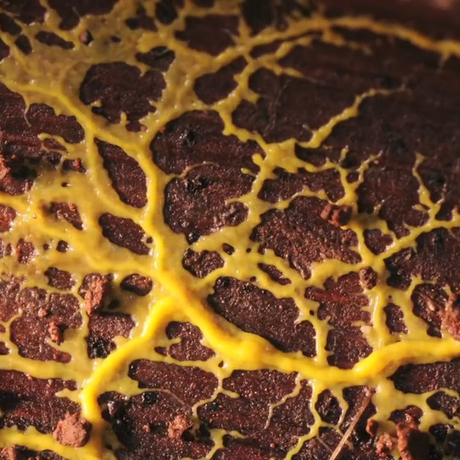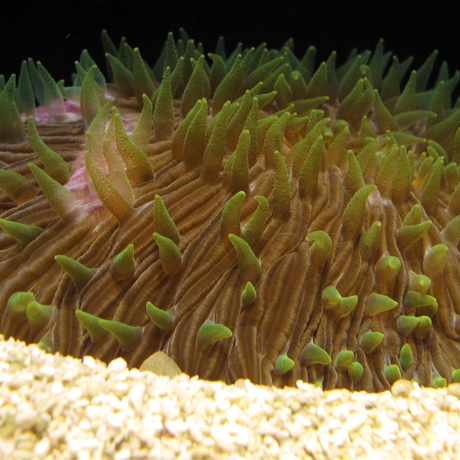Learn the benefit of using videos in the classroom, and browse resources to help you get started.
Physics and biology meet to create one of the world's strangest weapons: the slime cannon.
About This Video
Grade level: 6-13+
Length: 7.5 minutes
Next Generation Science Standards: LS1.A, LS1.B, LS4.C, PS3.C, Structure and Function
Summary
With their chubby bodies, soft, padded feet, and slow-motion gait, South American velvet worms appear pretty harmless. Unless they’re hungry, and you’re an insect. Over millennia, these ancient creatures have evolved a pair of hunting weapons unlike any other in nature: dual high-speed cannons capable of jetting viscous slime onto their prey from up to two feet away. Delivered with such power and speed, the velvet worm’s slime cannon takes the element of surprise to new levels. And because the goo is delivered through narrow, flexible tubes and expelled with such tremendous force, it can cover a vast area in a matter of milliseconds. Until recently, biologists still didn’t know exactly how these slime cannons work. But then Andres Concha, a Chilean physicist who studies the physical mechanisms in biological systems, turned his attention to velvet worms. His goal: to better understand how fluids operate in the microscopic world. After collecting live specimens from southern Chile's remote temperate rainforest, Concha and his team used high-speed cameras to film slime cannons in action. Their observations and measurements have provided new insights into the physics underlying this unique and deadly hunting tactic—and may one day lead to new biotechnology applications. Concha now applies his understanding of this mechanism—a unique adaptation that evolved some 500 million years ago—to construct working replicas of the slime cannons in his lab.
Video Discussion Questions
- How do velvet worms catch prey?
- How far can velvet worms shoot slime?
- The researcher in the video, Andres Concha, has a Ph.D. in Mathematical Physics. How does his degree relate to or help him in studying velvet worms?
- What information about the velvet worm does the time-lapse video help/allow Dr. Concha to see?
- What is the 'garden hose instability,' and how does it relate to the velvet worm?
- How is the velvet worm's slime-shooting abilities a combination of physics and biology?
- How could understanding the mechanism behind the velvet worm's slime-shooting abilities benefit humans?
Classroom Activities to Accompany This Video:
3-2-1

Have students choose a time lapse sequence from this video and watch it without sound. In their science notebooks, ask students to write down:
- 3 things they noticed or observed
- 2 questions they have or things they wonder about, and
- 1 thing they learned
On the board, draw a table with three columns labeled 'I noticed...', 'I wonder...', and 'I learned...'. Have students discuss their observations, questions, and knowledge gained, and write these things in the appropriate column on the board. In addition to the following questions, you can use the About This Video section to engage your students in a deeper dive into the velvet worm's slime cannon:
- What is the purpose of time-lapse video?
- How can time-lapse video be used in research, particularly in understanding how the velvet worm's slime cannon works?
- What velvet worm behaviors can you observe with the time-lapse video that you wouldn't necessarily be able to observe otherwise?
- What other applications of time-lapse video can you think of?
Math + Science

In the video, Dr. Andres Concha describes how he applies his background in mathematical physics to investigating a life science phenomenon. Exposing students to the practical applications of mathematical concepts in the world and how they can be used to solve real-life problems can generate more enthusiasm for math learning.
Obtaining, Evaluating, and Communicating Information
Have your students research and present on mathematical applications in science. Provide them with a list of topics to choose from, or let them choose their own. Challenge your students to present what they've learned to their classmates in a fun and creative way (skits, demonstrations, musical performance, etc.)!
Photo credit: Radek Lát
Additional Resources
News: Velvet Worms Squirt Slime!
Read more about how Dr. Concha and his team learned how velvet worms do such a good job at squirting slime at predators and prey.
Video Credits
Produced by Spine Films, this video appears in bioGraphic, a magazine powered by the California Academy of Sciences to showcase both the wonder of nature and the most promising approaches to sustaining life on Earth.


